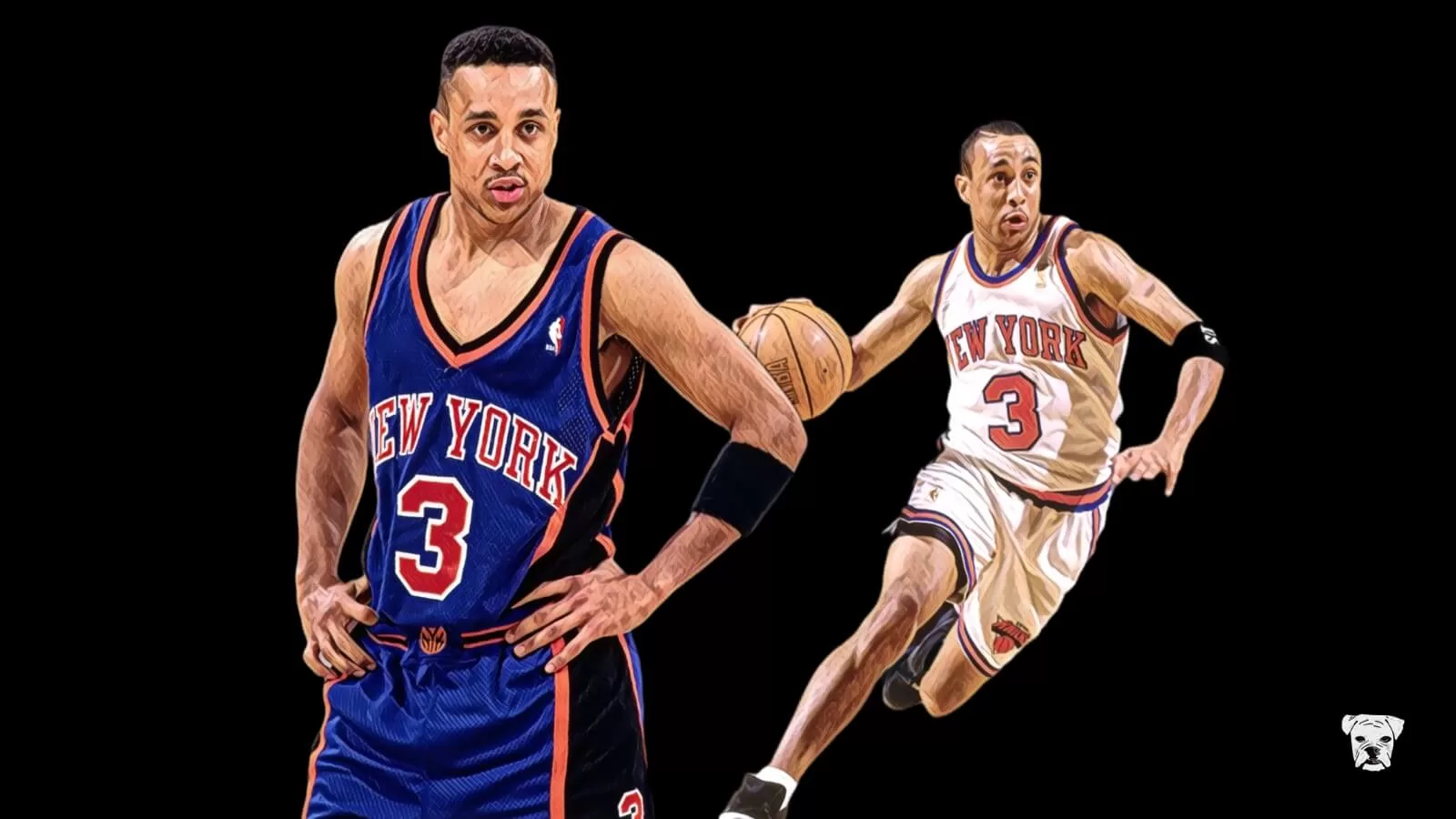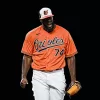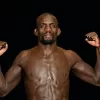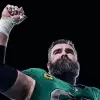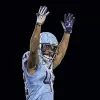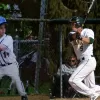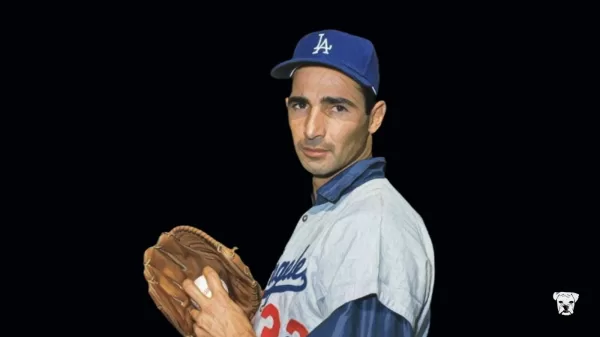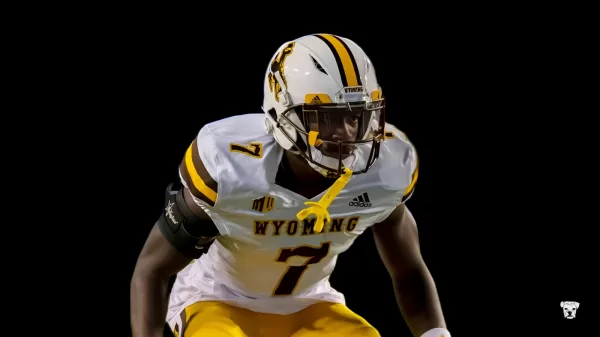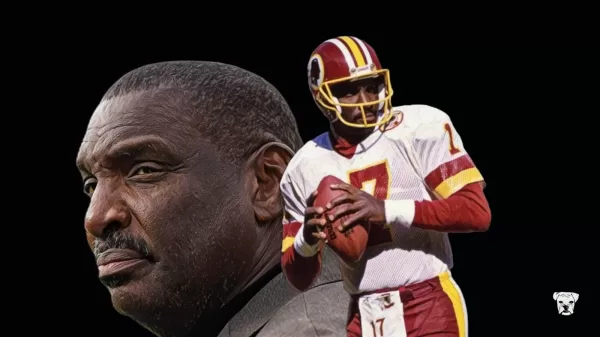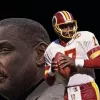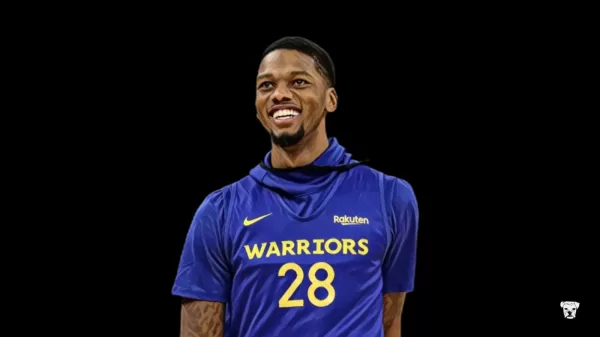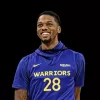Say what you will about John Starks, but let it be known that he did 100% bang one on the almighty MJ himself in the New York Knicks vs. Chicago Bulls 1993 playoff battle.
For anyone that wants to argue it, my comeback is, if Jordan had successfully swatted the dunk (which he attempted to do), then everyone would have said it was one of the greatest blocks ever. Therefore, yes Starks did hammer it down on his Airness and Horace Grant.
With that being said, his road to the 1993 NBA Playoffs and any of his thirteen-year professional basketball career was far from easy for John Levell Starks.
Born in Tulsa, Oklahoma, Starks grew up in a family that moved around a lot. Alongside four brothers, he lost count of how many places they lived.
But during that period of his life, Starks developed the grit that would define his basketball career.
“My older brothers used to beat me up on me a lot and make me tough,” he said in 1992.
“If I wanted to play with them, I couldn’t go outside and cry every time I got beat or elbowed. So I just held it in and I started to fight back a little.”
Starks attended Central High School in Tulsa, where he played just two games for the Braves. He quit the team as a senior to bag groceries at a local Safeway.
Following his short high school career, Starks joined the Rogers State University Hillcats as a member of the “taxi squad”.
But before Starks even had a chance to suit up for the Division II school, he got himself expelled for an altercation in which Starks stole another student’s stereo equipment.
After transferring to Northern Oklahoma College, Starks served a five-day jail sentence for the theft charges.
Unfortunately, his troubles followed him as while he made the Mavericks roster and averaged double digits in scoring, he was removed from school after getting caught smoking marijuana in his dorm.
For a third straight year, Starks found himself enrolling in another school. This time he took business courses at Tulsa Junior College while working his old job at Safeway.
“When I was back there, I was thinking, ‘Is this all I want out of life?'” Starks recalled.
![John Starks on bagging groceries during his time away from basketball: "When I was back there [at Safeway], I was thinking 'Is this all I want out of life.'"](https://jokermag.com/wp-content/uploads/2023/08/John-Starks-Quote-1024x1024.webp)
With no athletic program, Starks still found his way onto the court, playing intramural basketball, which fortunately served as a stepping stone to his future.
It was Ken Trickey – the new head coach of the Oklahoma Junior College Falcons – who gave him his next chance. In a scene straight out of a movie, Trickey’s assistant discovered Starks playing in a shirts-versus-skins intramural game.
“Rec centers are bigger than the little gym he was playing in,” the assistant coach said. “We told him he could come on over and try out and get his books paid for.”
After starting the first ten games on the bench, Starks soon found himself in the starting lineup, averaging 26 points and 14 rebounds as the team’s point guard.
But Starks’ college tour wasn’t done yet, as his play with the Falcons earned him a scholarship to Oklahoma State University. If anyone needed evidence that the combo guard could play at the next level, look no further than the 1987 Independence Tournament held in Kansas.
While it is unclear as to exactly how Starks missed the team bus, the story is that he had gotten married on the afternoon of December 13th, cut his reception short, and drove the 2.5-hour drive from OJC to Kansas in 1 hour and 45 minutes, got a speeding ticket, and yet somehow managed to score 22 points after arriving at halftime.
Although he averaged 15.4 points, 4.7 rebounds, and 4.6 assists throughout his lone thirty-game season with the Cowboys, it wasn’t enough to pique the interest of any team involved in the 1988 NBA Draft.
For those counting at home, that’d be four colleges and three teams in four years.
The Golden State Warriors signed Starks as an undrafted rookie free agent, where he played limited minutes behind soon-to-be Rookie of the Year, Mitch Richmond.
After being released in the summer of 1989, Starks found himself in a familiar role as a basketball vagabond, playing for the Cedar Rapids Silver Bullets in the Continental Basketball Association and then the Memphis Rockers of the World Basketball League.
While many NBA players would take playing in the CBA as a demotion (which it is), Starks stayed focused on his goal of returning to the league.
“He was so focused,” said Cedar Rapids’ public relations director Greg Anderson. “Some guys come into the CBA with a bad attitude and think they shouldn’t be here. Even though John had spent a year in the NBA, he never came off as a prima donna.”
Luck, or lack of it, was on Starks’ side in 1990 when the New York Knicks brought him in for a tryout.
During an early practice, Starks looked to impress coaches and potential teammates with his passion, energy, and athleticism by attempting to dunk on team leader and All-Star center Patrick Ewing.
Unfortunately, Starks not only missed the dunk but he also twisted his knee in the process. By NBA rules, teams were not allowed to release injured players, and in Starks’ case, the injury became his saving grace.
Serving mainly as a spark plug off the bench for most of his time in New York, Starks saw his playing time increase each season, along with his production.
Earning a starting role with the team for most of the 1992-93 season as the team’s shooting guard, Starks proved to be exactly what coach Pat Riley was looking for: a tough-as-nails reliable shooter.
The 1993 NBA Playoffs served as John Starks’ coming out party.
After (literally) going head-to-head with Indiana Pacers and their star Reggie Miller, Starks took his game to a whole new level.
Guarded by BJ Armstrong, he brought the ball downcourt with just a minute left, and the Knicks nursing a three-point lead. Coming off of the right-side wing, Starks drove the baseline.
In his way stood Horace Grant.
A 6’10” member of the NBA All-Defensive Team, the Chicago Bulls’ forward tried to shut down Starks’ drive to the hoop – similar to what Ewing did just a few years earlier.
Help came from #23, but it was too late. Starks elevated with the ball in his left hand and threw down the most memorable dunk in Knicks history, sending the Garden into a frenzy.
“I didn’t know about him in college,” Jordan said after the now-famous dunk. “But I know about him now.”
While the Bulls would go on to win the series and their third straight championship, Starks and his teammates knew they had the talent and ability, with their sights set on reaching the 1994 NBA Finals.
Earning a spot on the NBA All-Star Team thanks to a career-high 19 points and 5.9 assists, Starks helped the Knicks to a 57-25 record and their goal of representing the Eastern Conference in the 1994 Finals against the Houston Rockets.
On the brightest stage, Starks unfortunately had to deal with the passing of his father prior to Game 1. After flying back from the funeral, Starks was clearly and understandably affected, shooting just 3-18. Although he made up for his poor effort – averaging 21 points and 7 assists over the next five games – Starks went ice cold in Game 7 shooting a horrid 2-18.
Unfortunately for Starks and the Knicks, they would never return to the NBA Finals. But he did earn another individual accolade, winning the 1997 NBA Sixth Man of the Year.
Two years later, Starks and the team parted ways in a trade that sent him back to the Golden State Warriors.
A year-and-a-half in the Bay Area, a cup of coffee in Chicago, and two seasons with the Utah Jazz finished off Starks’ thirteen-year NBA career and one of the most unique underdog stories in NBA history.
Then-Oklahoma State coach Leonard Hamilton summed it up best:
“You read about this kind of story about a good person making it good. He did it by fighting and scrapping all the way. It’s kind of like the American Dream.”
Here are a few related stories you might also like:

